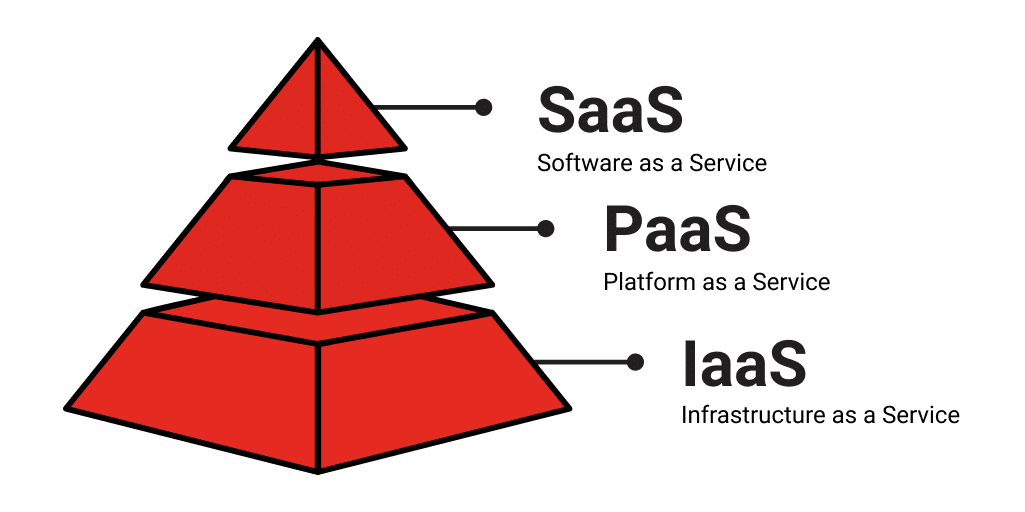The transformative Storage as a Service (STaaS) in cloud computing was developed to let companies of all sizes and budgets take advantage of high-performing storage tools.
Cloud-based storage solutions not only deliver necessary resources affordably, but they also omit the need for costly in-house infrastructure. STaaS can scale as per business needs and provide on-demand access to enterprises for the exchange of comparatively minimal subscription charges. These solutions are easy, productive, and highly efficient ways to store organizational data.
In this article, I will simplify the definition of STaaS, discuss its types, examples, advantages and disadvantages, hybrid cloud models, public vs. private cloud solutions, and some other interesting aspects of it.
What is Storage as a Service or STaaS?
STaaS is a cloud model that a cloud-service provider offers for rent to organizations to store data. The service provider also provides the company with software that is used for data access. With STaaS, companies do not need to worry about the cost and maintenance of their own storage infrastructure. You can choose from various subscription models depending on the data type, storage amount, security level needed, etc.
Mostly, the storage available is of three types: block, file, or object. The third-party provider takes care of data backup, encryption, replication, and disaster recovery. As per the current need, organizations can also scale up or scale down their data storage capacity. It is a greatly customizable and affordable way for organizations of all sizes to store data, as the model is based on, ‘you pay for what you use.’

How does STaaS work?
The first formal step between the STaaS provider and an organization is drafting the service-level agreements (SLAs). These agreements legally bind the relationship between the two parties, provider and organization, based on price lock-in, storage capacity, cost per data transfer, and cost per gigabyte stored.
Another commonly discussed feature of STaaS is based on the storage of ‘hot’ and ‘cold’ data. Exactly like hot food requires immediate service, ‘hot’ data is considered information in use and of utmost importance. On the contrary, just like cold food doesn’t need immediate attention, cold data is stored in cold storage and is of no immediate requirement.
Types of cloud storage services
There are three types of storage services in cloud computing:
Block-based storage
In this kind, information is divided into blocks of data for storing in cloud environments. Even though it does not allow quick data access, it can be costlier than other storage types.
- It’s like hard drives in the cloud.
- Requires volume partitioning & formatting.
- Offers direct access to volumes, partitions, and drives.
File-based storage
In this type, data is organized into files and folders. Mostly found on PCs, file storage uses file directories as indexes of alphabetically listed files. It offers minimal scalability, as with file overload, the directory can be hard to navigate.
- Uses NAS or Network-Attached Storage devices.
- You can share files over the network.
- Offers simple storage access over the network.
Object-based storage
Unlike the other two, this storage type treats data as objects. It is also the preferred storage type for AI, IoT, and API devices. It provides the ability to scale as much as required.
- Data operations require REST APIs and HTTP protocols.
- Provides a flat structure for files and objects.
- It is simple and highly accessible.
Some Top STaaS Providers
This list is curated based on the biggest suppliers of STaaS services, in descending order. As per Synergy Research Group, the top 3 companies ruled two-thirds of the international market of cloud infrastructure in 2024.
1. Amazon Web Services or AWS: They offer more than 200 cloud services with applications across several technical and industrial sectors. AWS held about 34% of the market share in 2024.
2. Microsoft Azure Cloud Platform: As per market share, they rank second with about 23% of the market share. They also offer over 200 cloud-based products and services, with Azure Storage being the most popular one.
3. Google Cloud Platform or GCP: Being the third largest cloud service provider, GCP has seen consistently high growth in the first quarter of 2025. Their services include object storage, data retrieval, etc.
4. Alibaba Cloud: It is highly sought-after in Asian regions, making it climb to the top five global positions. They offer solutions like cloud storage and backup, object storage, block storage, and file storage.
5. IBM Cloud: Holding about 4% of the global CSP market, they offer more than 170 products, which include hybrid cloud, on-premise, and multicloud configurations.
2-Tier STaaS providers
Some other significantly popular CSP companies include:
- Huawei
- MongoDB
- Oracle
- China Telecom
Public Vs. Private Storage Solutions
Take a quick look the the table below to learn the most commonly differentiating factors between public and private cloud storage. Also, I have listed some popular use cases of both.
| Aspect | Private Cloud | Public Cloud |
| Ownership | Owned by a single organization | Owned by a third-party provider |
| Hosting | Either on-premise or off-site by service providers | Offers resources over the internet, shared basis |
| Performance | Trustworthy and consistent | Has multiple data centers for high performance |
| Scalability | Highly customizable, can be upscaled or downscaled as needed | Subscription-based, pay as per your need |
| Security | The organization has full control over the security policies | Isolation of customers’ workloads and data for security and privacy |
| Investment | High | Low |
Use Cases of Private Cloud Environments
- Used for sensitive workloads with strict compliance requirements.
- For confidential data like patient records/diagnoses, and financial records.
- More control over data security, sovereignty, and residency.
Use Cases of Public Cloud Environments
- For testing and development.
- For scattered teams, it offers global access to shared applications and data.
- Quickly scaling resources during unprecedented demand times.
- Provides real-time data insights due to the power of compute and cloud storage.
Hybrid Cloud Storage Solutions
Just as the name suggests, the term ‘hybrid cloud’ combines the public and private cloud environments and lets data and applications move smoothly between them. The most useful part of this flexible architecture is that it combines the best features from each environment: the private cloud’s sensitive environment, and the public cloud’s backup, testing, scalability, etc.
Pros of hybrid cloud
- Flexible scalability for long-term businesses that have fluctuating demands.
- Businesses can separate and store sensitive and less important information in private and public clouds, respectively.
- Latest hybrid clouds use orchestration tools for automating workload placement, accommodating resources, and failovers across environments.
- Enhanced efficiency, resilience, and cost-effectiveness.
Some popular hybrid cloud platforms
- Microsoft Azure Stack
- Azure VMware Solution
- Google Cloud VMware Engine
- VMware HCX
- Google Distributed Cloud
Cloud Computing Service Models: IaaS, PaaS & SaaS
Before delving into this topic, let me ask you a question. What do rapid-growing startups and legacy organizations have in common? Giving you a minute…
They are all shifting to a cloud-first strategy. Cloud computing is not an option but one of the key needs for modernization.

Three core areas of cloud computing are IaaS (Infrastructure-as-a-Service), PaaS (Platform-as-a-Service), and SaaS (Software-as-a-Service). I will explain them briefly to give you some idea about these important components of cloud computing.
IaaS
IT infrastructures can be expensive to develop and maintain in-house. That’s when IaaS, or Infrastructure as a Service, can be helpful. It doesn’t require heavy infrastructure-related costs, but gives you the same control over it. Mostly, it’s the first step of the cloud computing journey for companies.
Benefits
- Unlimited scalability
- Cost-effective
- Strong disaster recovery with minimal downtime
- Agile system with comprehensive security
PaaS
Platform as a Service is a pre-developed cloud environment that you can utilize to develop, manage, test, and deliver applications. PaaS allows you to fully concentrate on the deployment part, as you do not need to worry about the backend infrastructure.
Benefits
- Application development and management made easy
- Quick delivery
- Highly flexible and scalable
- Supports collaboration
SaaS
The most well-known of the three, Software as a Service, offers completely functional application accessibility via the internet. There’s no need to develop, host, use, or maintain software within your organization. All upgrades, infrastructure, patches, and security are taken care of by the third-party service provider.
Benefits
- You enjoy the latest features
- Easy implementation
- Highly flexible and scalable
- Minimal upfront investment
Advantages of Using Storage as a Service
- You just need a stable internet connection for easy accessibility from anywhere.
- You can scale up or down depending on your changing data storage needs.
- Subscription-based model allows you to save money on unneeded features and storage space.
- Highly reliable and secure.
- Data redundancy.
- Successful collaboration and file sharing.
- Automatic data backup and recovery.
Disadvantages of Using Storage as a Service
- Always dependent on a stable internet connection.
- At times, it might be slow to access data from an on-premise environment.
- Merging StaaS along with your organization’s IT infrastructure and applications can be complicated, especially without the required expertise.
- Limited control over STaaS storage infrastructure.
Conclusion
Cloud storage optimization empowers organizations to handle software and applications successfully without having the pressure to build and maintain them on-premises. That’s the reason why Synergy Research Group findings show that organizations’ spending on cloud infrastructure services was around $94 billion globally in Q1 2025. And most of this money was spent on public Infrastructure as-a-Service (IaaS) and Platform as-a-Service (PaaS) services.
After reading the benefits of Storage as a Service, you must be a step closer to understanding how to choose a cloud storage service for your business. Whether you are the decision-maker of a legacy business or a fast-evolving startup, STaaS is the technological catalyst to your long-term success.







